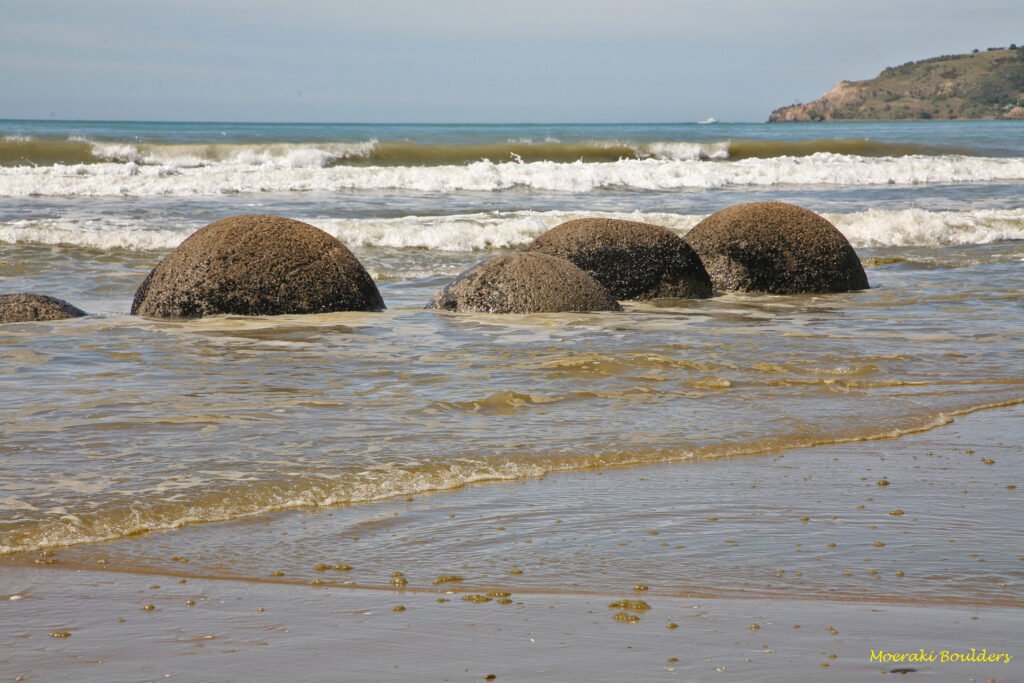Picture this: you’re walking along a pristine beach on New Zealand’s South Island when you suddenly encounter what looks like a collection of gigantic stone eggs scattered across the sand. These aren’t just any rocks – they’re the famous Moeraki Boulders, some of the most perfectly spherical natural formations on Earth. These ancient geological wonders have been sitting on Koekohe Beach for millions of years, yet they continue to baffle scientists and enchant visitors with their almost supernatural appearance.
The sight is so surreal that many people’s first reaction is to question whether these boulders are even real. How could nature create such geometrically perfect spheres? What cosmic forces were at work to craft these stone marvels that seem more like sculptures than natural formations?
The Mystery That Captivated Scientists for Centuries

When European explorers first stumbled upon the Moeraki Boulders in the 1800s, they were completely mystified. These weren’t your typical beach rocks – they were massive, perfectly round stones that seemed to defy natural explanation. Early theories ranged from the plausible to the downright bizarre, with some suggesting they were cannonballs from ancient battles or even eggs from mythical creatures.
The scientific community was equally perplexed. How could sedimentary processes create such perfect spheres? The boulders challenged everything geologists thought they knew about rock formation. It wasn’t until decades of careful study that researchers began to unravel the incredible story behind these natural masterpieces.
Ancient Maori Legends and Cultural Significance

Long before scientists attempted to explain the boulders, the Maori people of New Zealand had their own rich mythology surrounding these mysterious stones. According to legend, the boulders are the remains of eel baskets, calabashes, and kumara (sweet potatoes) that were washed ashore from the wreck of Arai-te-uru, a large sailing canoe.
The story tells of how this ancestral canoe was carrying provisions when it was wrecked on the nearby reef. The cargo transformed into the various boulders scattered along the beach, each representing different supplies from the vessel. This beautiful legend reflects the deep spiritual connection the Maori people have with the natural world and their ability to weave meaningful stories around geological phenomena.
The Science Behind Perfect Spherical Formation

The truth behind the Moeraki Boulders is almost as fascinating as the myths. These incredible formations are the result of a geological process called concretion, which occurred over millions of years beneath the ocean floor. During the Paleocene epoch, around 60 million years ago, the area was covered by a shallow sea where sediments slowly accumulated.
As organic matter decomposed within these sediments, it created localized chemical reactions that caused minerals to precipitate and cement together. This process began around small nuclei – perhaps a shell fragment or piece of organic matter – and gradually built outward in all directions. The uniform chemical conditions and slow, steady process resulted in the remarkably spherical shapes we see today.
The Role of Septarian Nodules in Boulder Formation

Many of the Moeraki Boulders contain fascinating internal structures called septarian nodules. These are characterized by distinctive crack patterns filled with different minerals, creating beautiful geometric designs inside the spheres. The cracks formed as the boulders dried and contracted during their formation process, similar to how mud cracks when it dries.
These internal fissures were later filled with calcite, aragonite, and other minerals that seeped in from surrounding sediments. When a boulder breaks open – either naturally through weathering or accidentally through human activity – it reveals these stunning internal patterns that look like abstract art. The contrast between the smooth, plain exterior and the complex, colorful interior never fails to amaze visitors.
Size Variations and Their Geological Implications
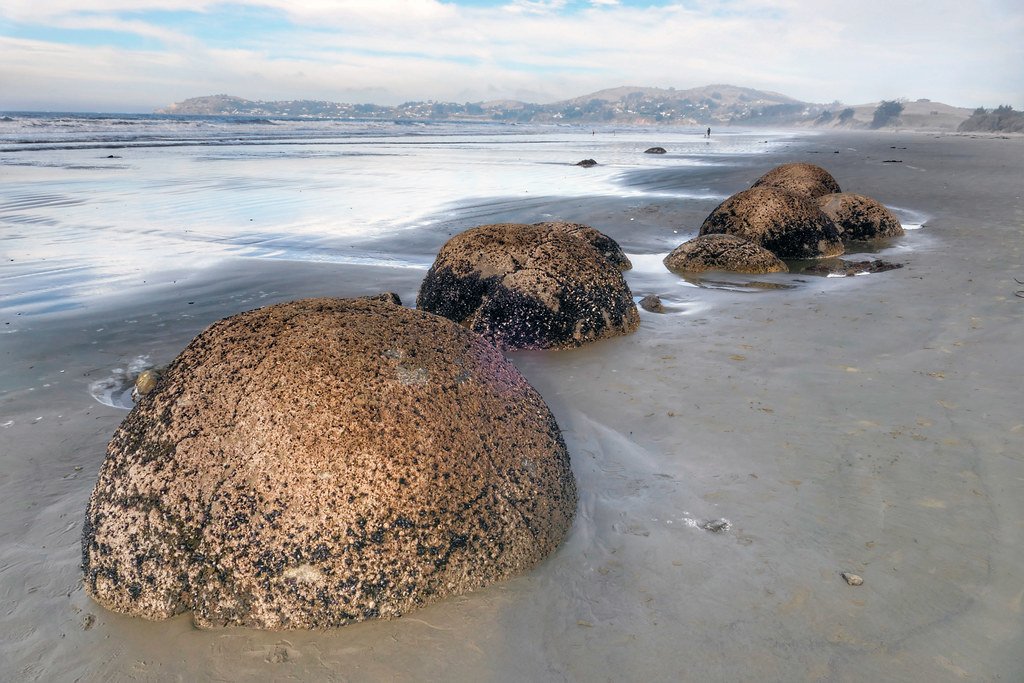
The Moeraki Boulders come in a remarkable range of sizes, from small spheres barely larger than a basketball to massive giants weighing several tons and measuring over two meters in diameter. This size variation tells us important information about the conditions during their formation and the length of time the concretion process continued.
The largest boulders likely had more time to grow or were formed in areas with higher concentrations of mineral-rich solutions. Smaller boulders might have formed later in the process or in areas where the chemical conditions were less favorable for continued growth. This natural size distribution creates a visually striking landscape that ranges from scattered pebbles to imposing stone giants.
The Mudstone Matrix and Erosion Process
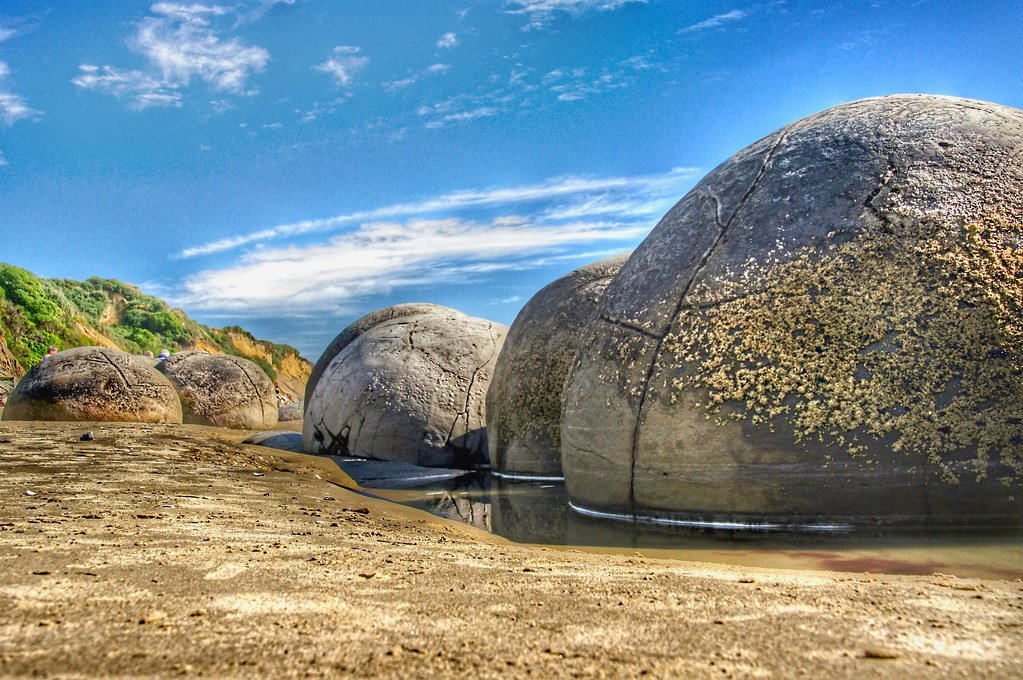
The boulders were originally embedded in a soft mudstone formation that has been gradually eroding away over thousands of years. This mudstone, known as the Moeraki Formation, is much softer than the cemented boulders themselves, which explains why the spheres eventually become exposed on the beach. As waves and weather wear away the surrounding rock, the resistant boulders are slowly revealed like ancient treasures emerging from their stone cocoons.
This ongoing erosion process means that new boulders are constantly being exposed while others are being worn away by the relentless action of wind and waves. It’s a dynamic system where the beach landscape is continuously changing, with some boulders disappearing entirely while others emerge from the cliff face for the first time in millions of years.
Chemical Composition and Mineral Content
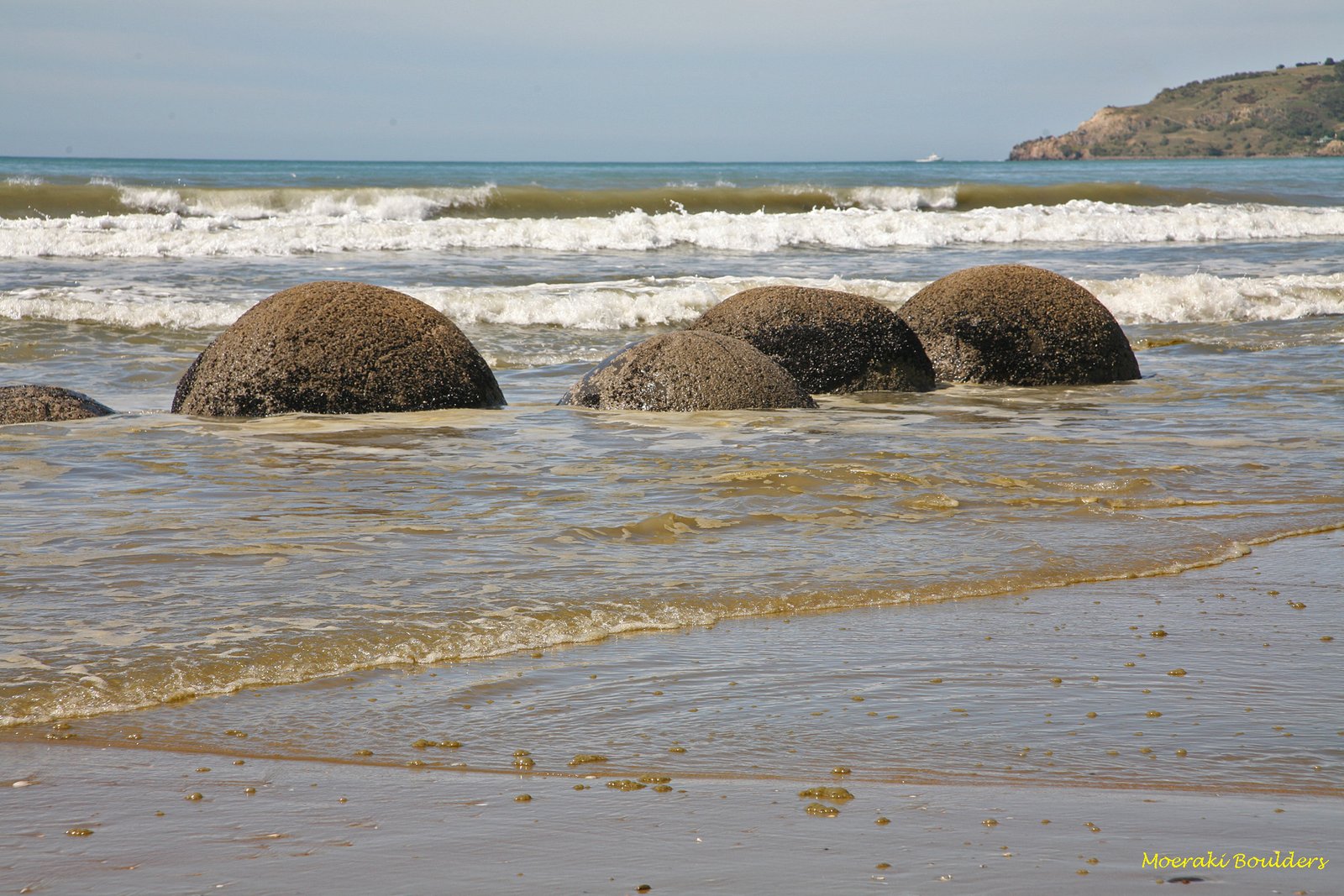
The Moeraki Boulders are primarily composed of calcite and aragonite, both forms of calcium carbonate, mixed with various other minerals and sediments. This composition gives them their characteristic gray color and relative hardness compared to the surrounding mudstone. The high calcium carbonate content also explains why the boulders have been able to maintain their spherical shape over millions of years.
Trace elements within the boulders include iron, magnesium, and various organic compounds that were incorporated during the formation process. These additional minerals contribute to the subtle color variations seen in different boulders and create the beautiful patterns visible in cross-sections. The exact mineral composition can vary from boulder to boulder, reflecting the slightly different chemical conditions present when each one formed.
Comparing Moeraki to Other Concretion Sites Worldwide
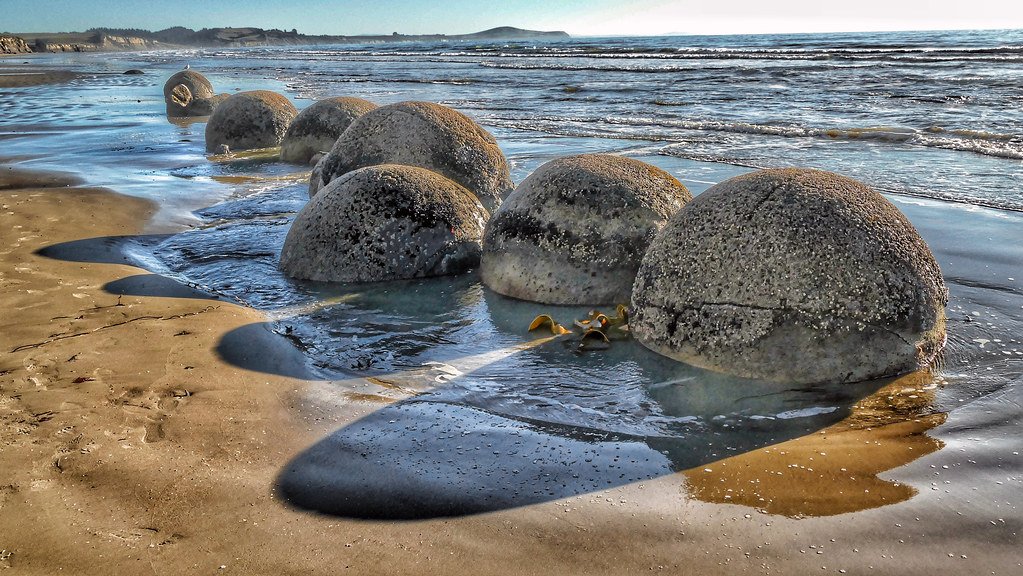
While the Moeraki Boulders are perhaps the most famous example of large spherical concretions, they’re not unique in the geological world. Similar formations can be found in various locations around the globe, including the Koutu Boulders in New Zealand, the Bowling Ball Beach in California, and the stone spheres of Costa Rica. However, few sites match Moeraki’s combination of size, perfection, and accessibility.
What makes Moeraki special is not just the size and near-perfect spherical shape of the boulders, but also their setting on an easily accessible beach where visitors can walk among them. Many other concretion sites are located in remote areas or are embedded in rock formations that make them difficult to observe. The Moeraki site offers an unparalleled opportunity to study and appreciate these geological marvels up close.
The Timeline of Formation and Exposure
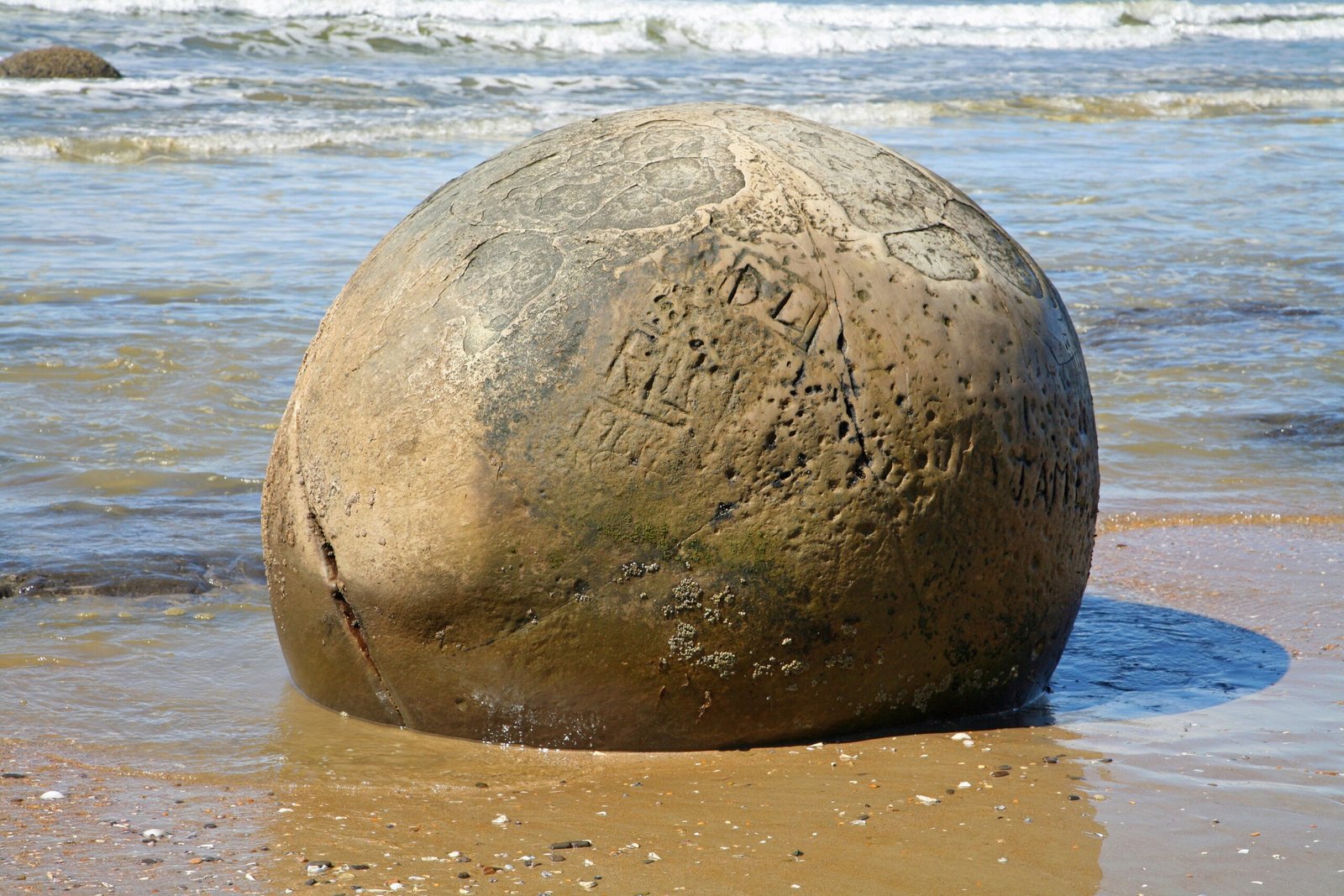
The formation of the Moeraki Boulders began approximately 60 million years ago during the Paleocene epoch, when the area was covered by a shallow sea. The concretion process likely took hundreds of thousands to millions of years to complete, with minerals slowly precipitating and cementing together grain by grain. This incredibly slow process is what allowed the boulders to achieve their remarkable spherical symmetry.
The exposure of the boulders on the beach is a much more recent phenomenon, occurring over the last few thousand years as sea levels changed and coastal erosion accelerated. Many of the boulders we see today have only been fully exposed within the last few centuries, making them relatively new arrivals on the beach despite their ancient origins.
Environmental Factors Affecting Boulder Preservation
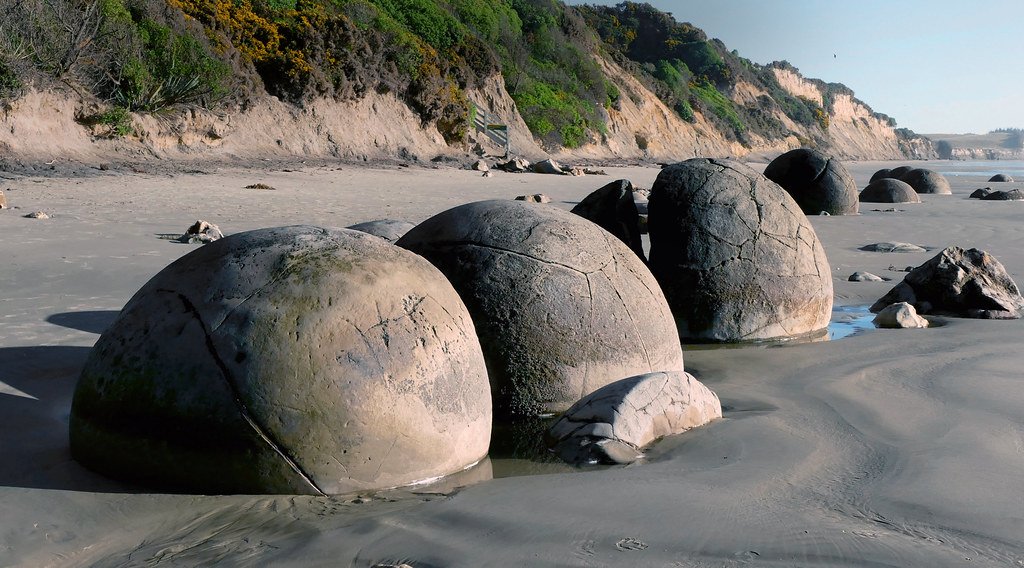
The preservation of the Moeraki Boulders depends on a delicate balance of environmental factors. The marine environment provides both protection and threat – while the constant moisture helps prevent the calcite from completely drying out and cracking, the salt spray and wave action gradually wear away the boulder surfaces. Temperature fluctuations also play a role, as the expansion and contraction of the stone can create stress fractures over time.
Human activity has become an increasing concern for boulder preservation. Tourists climbing on the boulders, collecting fragments as souvenirs, and even attempts to carve initials or create graffiti all contribute to accelerated deterioration. The New Zealand Department of Conservation has implemented protective measures, but the challenge remains balancing public access with long-term preservation of these irreplaceable geological treasures.
The Beach Environment and Tidal Influences
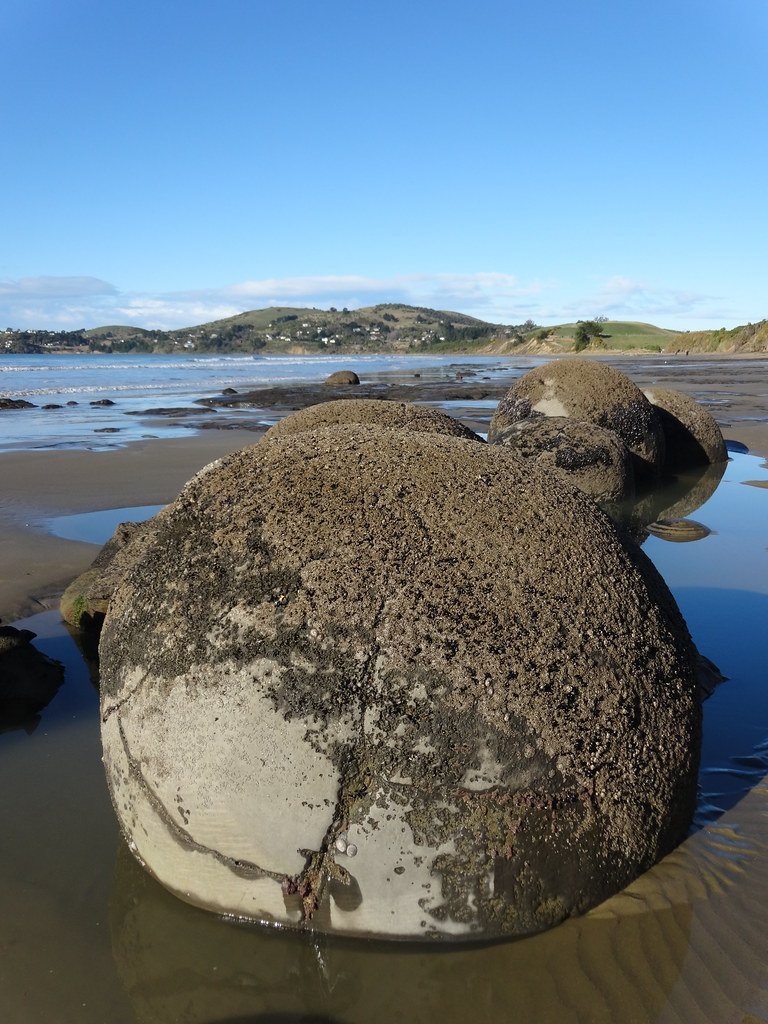
Koekohe Beach, where the Moeraki Boulders are located, experiences significant tidal variations that dramatically change the appearance of the boulder field throughout the day. During low tide, many more boulders become visible, including smaller ones that are normally submerged. High tide, on the other hand, can completely cover some of the smaller formations and create a more dramatic seascape around the larger boulders.
The tidal action also plays a crucial role in the ongoing erosion process that continues to expose new boulders from the mudstone cliff face. Each tide cycle brings waves that chip away at the soft surrounding rock while simultaneously polishing the harder boulder surfaces. This natural process has been occurring for thousands of years and will continue long into the future.
Modern Scientific Research and New Discoveries
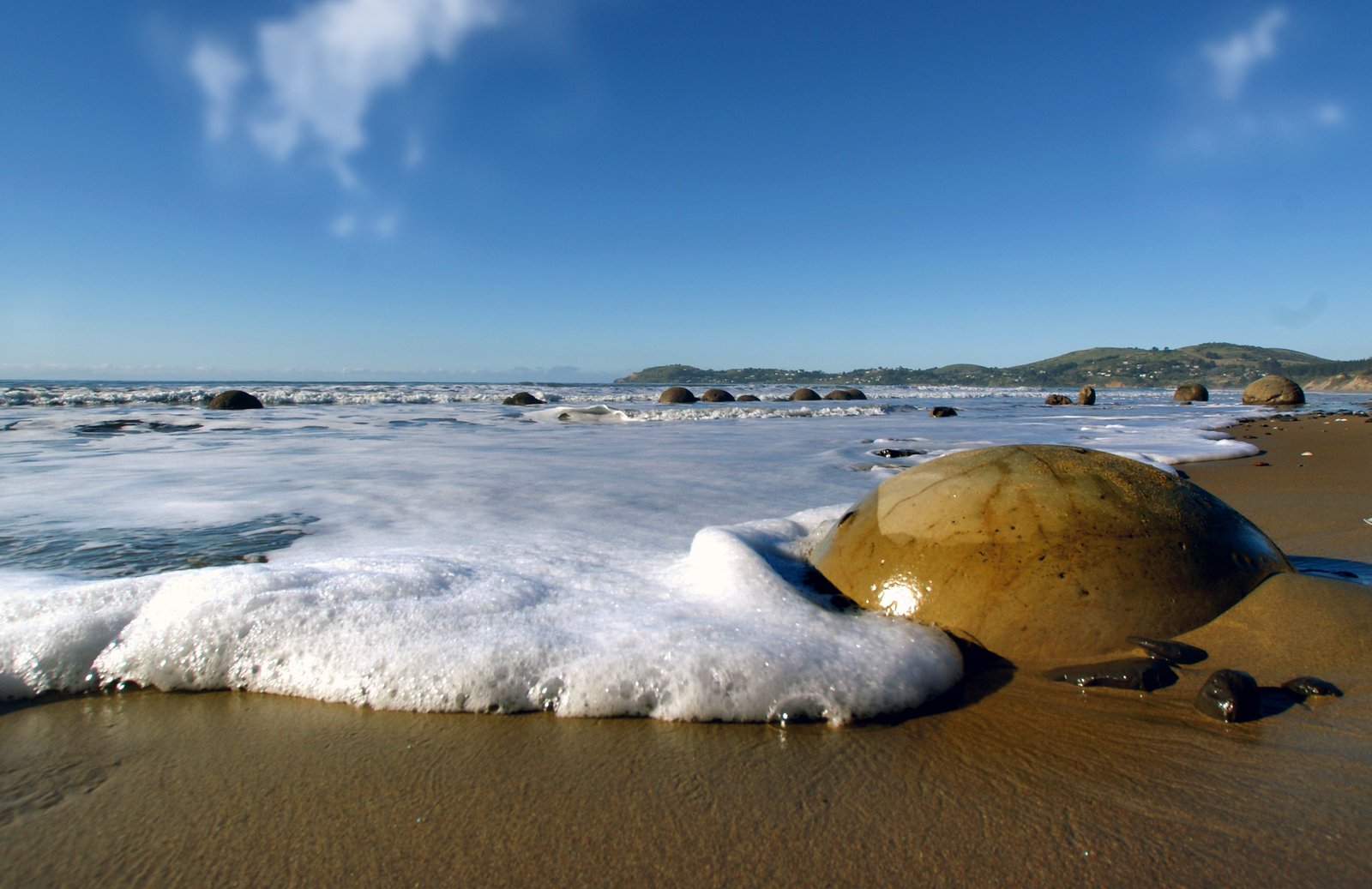
Contemporary geological research has revealed fascinating new details about the Moeraki Boulders using advanced techniques like CT scanning and chemical analysis. Scientists have discovered that the internal structure of many boulders is even more complex than previously thought, with multiple layers of different mineral compositions that record changing environmental conditions during formation.
Recent studies have also identified microscopic fossils within some boulders, providing valuable insights into the ancient marine ecosystem that existed 60 million years ago. These tiny remains of marine organisms help scientists understand the environmental conditions that led to the formation of these remarkable concretions and paint a picture of what life was like in the ancient seas.
Tourism Impact and Conservation Challenges
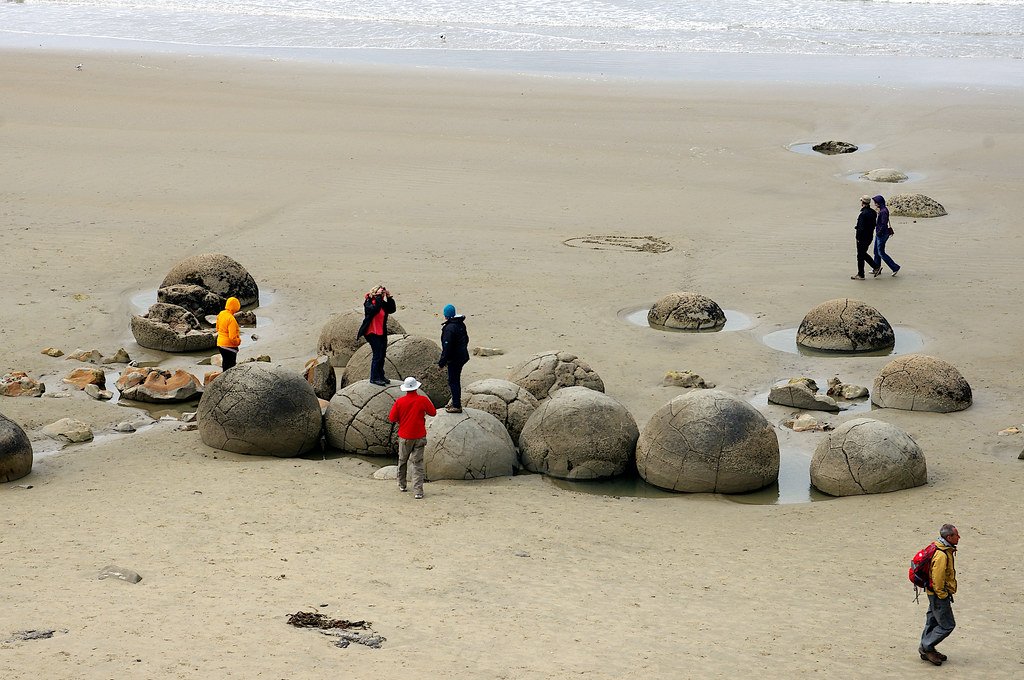
The Moeraki Boulders have become one of New Zealand’s most photographed natural attractions, drawing hundreds of thousands of visitors annually. This popularity brings both benefits and challenges – while tourism provides economic opportunities for the local community, it also puts pressure on the fragile geological formations. The constant foot traffic around the boulders accelerates erosion and creates pathways that can channel water flow in ways that affect the surrounding environment.
Conservation efforts focus on educating visitors about the geological significance of the site while implementing protective measures that don’t detract from the natural beauty. Boardwalks and viewing platforms help direct foot traffic away from the most vulnerable areas, while interpretive signs provide information about the formation process and the importance of preserving these ancient structures for future generations.
Photographic Opportunities and Best Viewing Times
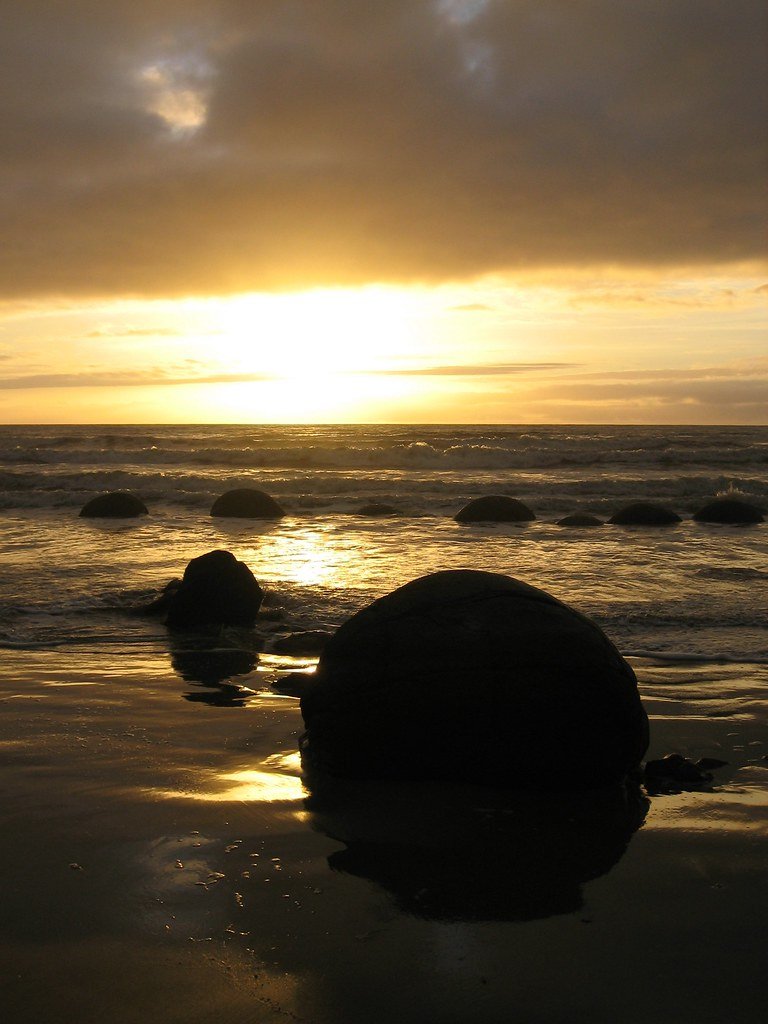
The Moeraki Boulders offer some of the most spectacular photographic opportunities in New Zealand, with the dramatic contrast between the perfect spheres and the rugged coastline creating stunning compositions. The best lighting conditions typically occur during the golden hours of sunrise and sunset, when the warm light enhances the texture and color of both the boulders and the surrounding landscape.
Low tide provides the most comprehensive view of the boulder field, revealing formations that are normally hidden beneath the waves. Many photographers time their visits to coincide with low tide during the golden hours, creating images that capture both the geological wonder and the natural beauty of the coastal environment. The reflections of the boulders in tidal pools and wet sand add another dimension to the photographic possibilities.
Similar Formations in New Zealand and Beyond
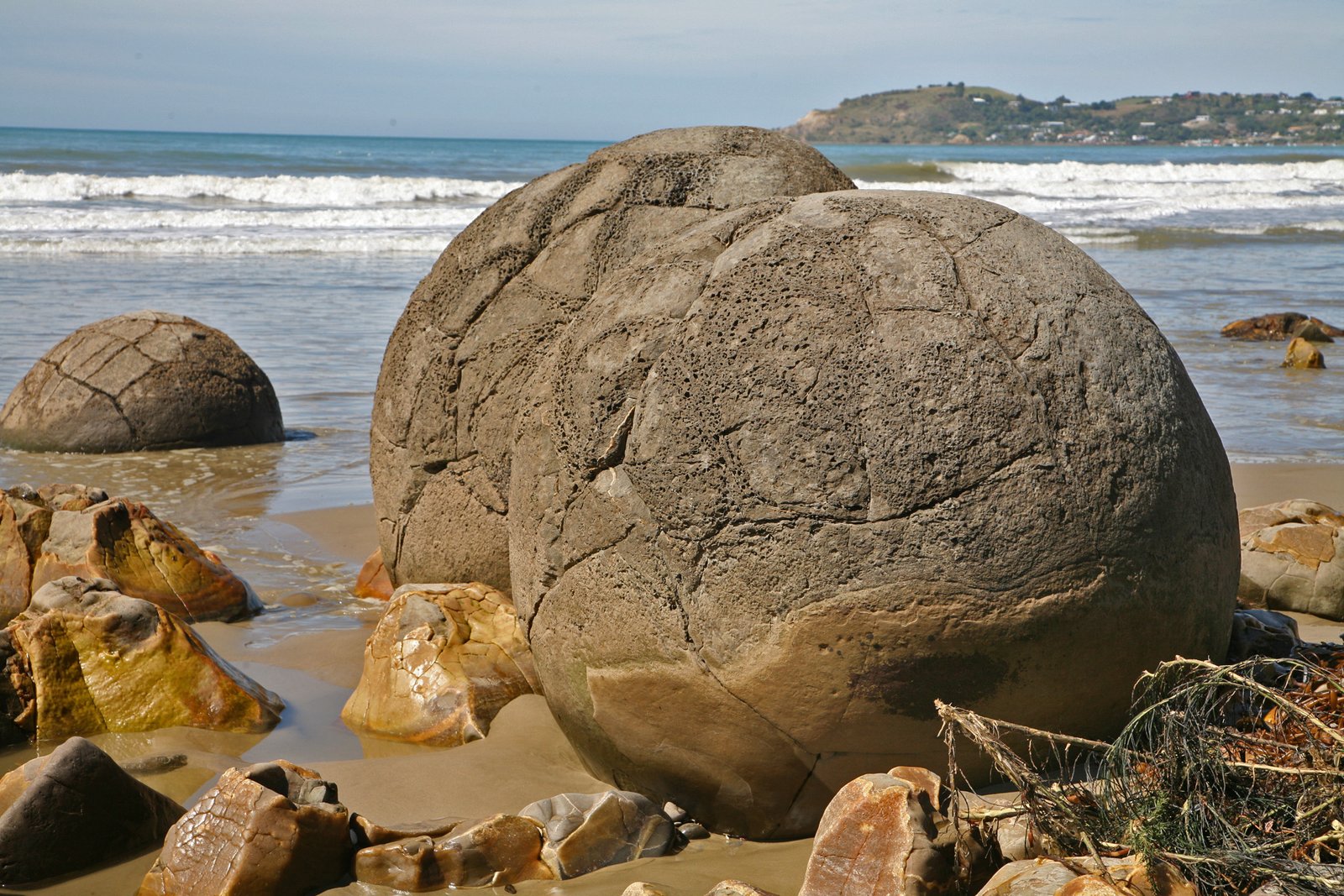
New Zealand hosts several other sites with similar spherical concretions, though none quite match the fame of Moeraki. The Koutu Boulders near Hokianga Harbour on the North Island share similar formation processes but are smaller and less perfectly spherical. These formations demonstrate that the geological conditions favoring concretion formation occurred in multiple locations throughout New Zealand’s ancient marine environments.
Internationally, similar formations can be found in places like Bowling Ball Beach in California, where smaller but equally impressive spherical concretions emerge from the rocky coastline at low tide. The Cannonball Concretions in North Dakota and the stone spheres of Costa Rica represent different geological processes that produce similar results, showing that nature has multiple pathways to create these remarkable spherical formations.
The Future of the Moeraki Boulders
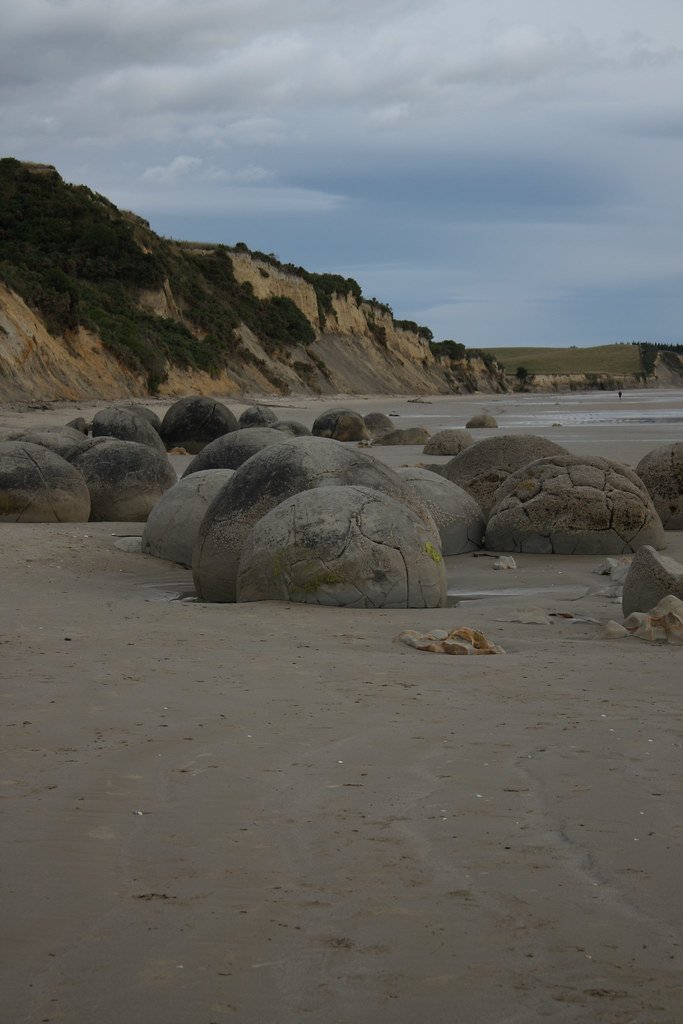
The future of the Moeraki Boulders depends on continued geological processes that have been operating for millions of years. New boulders will continue to be exposed from the mudstone cliff face as erosion progresses, while existing boulders will gradually weather away under the influence of wind, waves, and chemical weathering. This natural cycle means that the boulder field will continue to change and evolve over time.
Climate change and rising sea levels may affect the rate of erosion and the long-term stability of the site. Scientists are monitoring these changes to better understand how environmental factors might influence the preservation of the boulders. The challenge for future generations will be balancing the natural processes that created and continue to shape these formations with the human desire to preserve them as geological heritage sites.
Scientific Significance and Educational Value
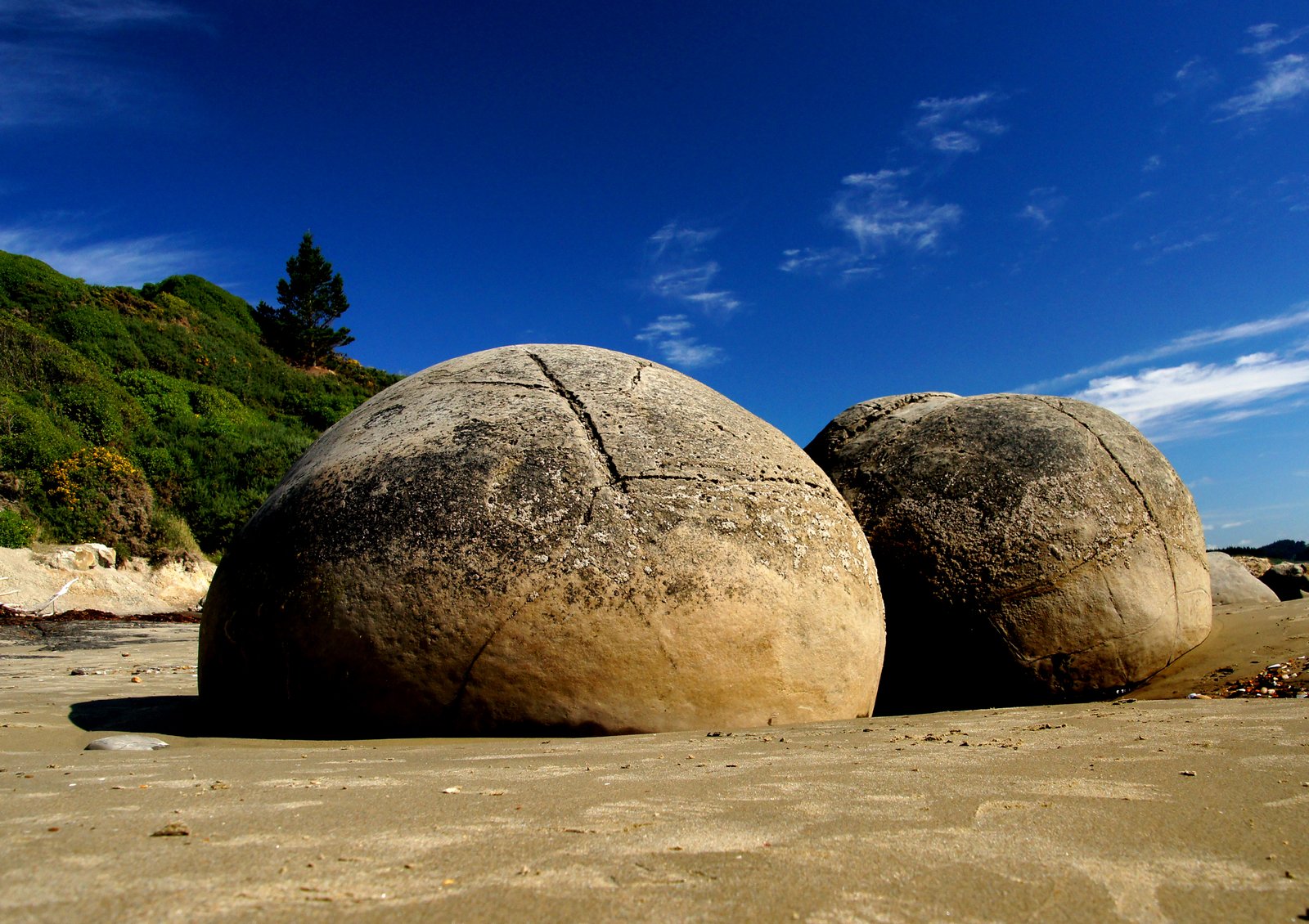
The Moeraki Boulders serve as a natural laboratory for understanding concretion formation and ancient marine environments. They provide tangible evidence of geological processes that operated over millions of years and offer insights into the conditions that existed in New Zealand’s ancient seas. For geology students and researchers, the site represents an exceptional opportunity to study large-scale concretion formation in a natural setting.
The educational value of the boulders extends beyond pure science to encompass broader lessons about Earth’s history, the power of natural processes, and the importance of geological heritage conservation. They demonstrate how seemingly simple chemical processes, given enough time, can create structures of remarkable beauty and complexity. This makes them powerful tools for communicating geological concepts to the general public.
Conclusion
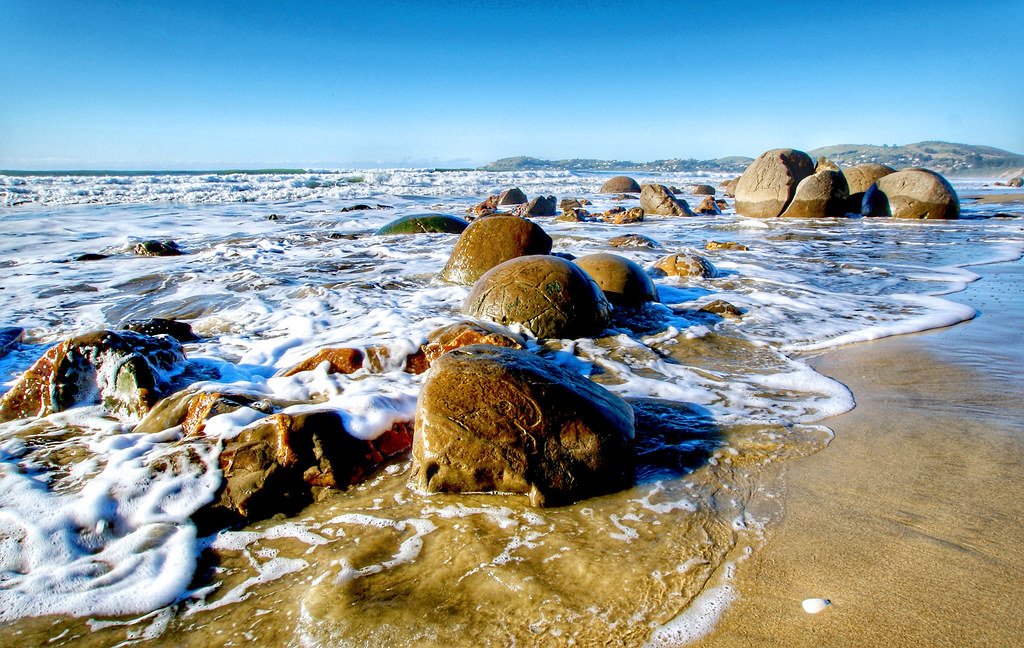
The Moeraki Boulders stand as testament to the incredible power of geological processes operating over vast timescales. These perfect spheres, formed grain by grain over millions of years, represent one of nature’s most impressive displays of mathematical precision and artistic beauty. From their mysterious origins in ancient seas to their current status as one of New Zealand’s most beloved natural attractions, they continue to inspire wonder and scientific curiosity.
Their story reminds us that our planet is constantly changing, creating marvels that challenge our understanding and capture our imagination. The boulders bridge the gap between scientific knowledge and natural wonder, offering visitors a chance to touch something that connects us directly to Earth’s ancient past. As we face an uncertain environmental future, these geological treasures serve as reminders of the delicate balance between preservation and natural change.
The next time you see a perfect sphere in nature, whether it’s a boulder on a beach or a simple round pebble, remember the Moeraki Boulders and the incredible journey through deep time that created them. How many other geological mysteries are waiting to be discovered on beaches around the world?

